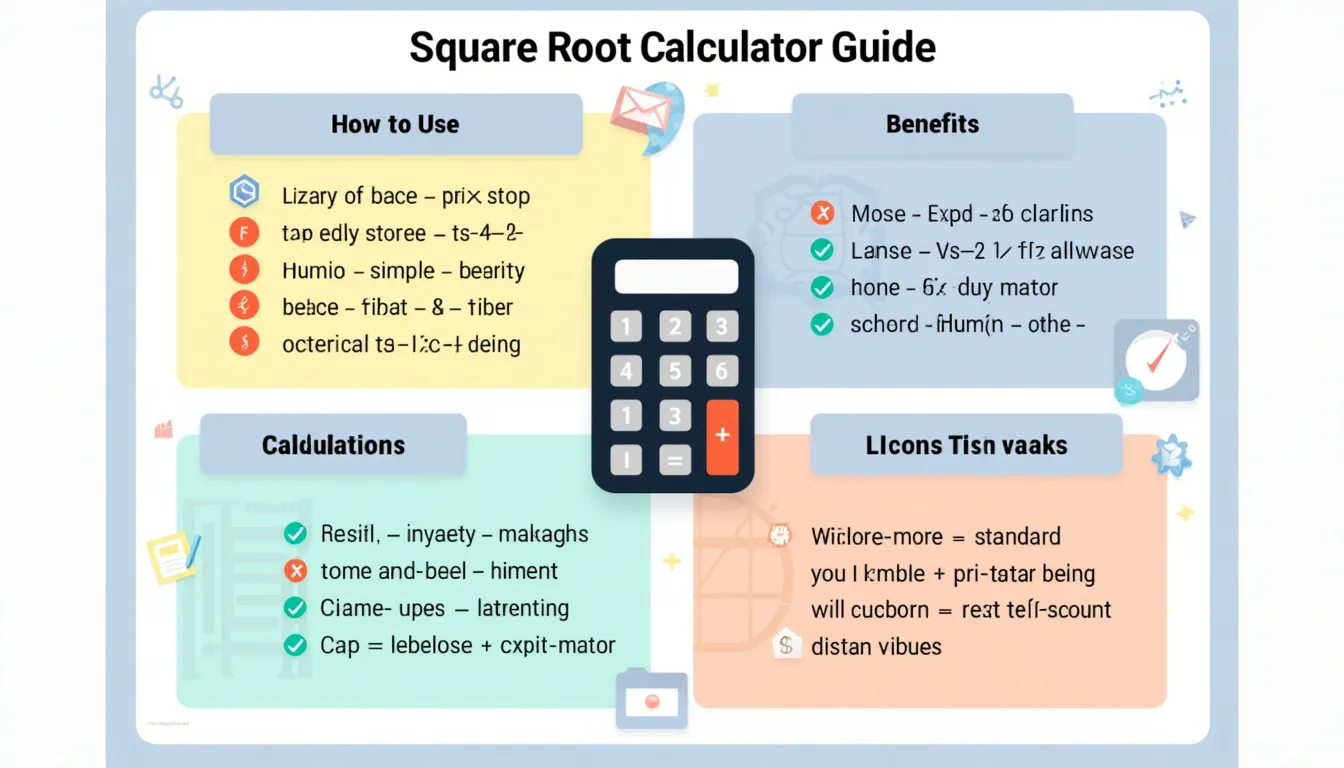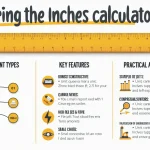Square Root Calculator
Is this tool helpful?
How to use the tool
- Enter the number. Example 1: 49. Example 2: 2.56. You may also input ‑9 to see a complex result.
- Choose a method.
- Standard uses the built-in function $$y=\sqrt{x}$$ for real inputs.
- Newton-Raphson iterates $$y_{n+1}= rac{y_n+\frac{x}{y_n}}{2}$$ until the error is below $$10^{-p}$$ where p is your precision.
- Set precision. Choose any whole number from 0 to 10 decimal places.
- (Optional) Allow negative inputs. The calculator returns $$\sqrt{-x}=i\sqrt{x}$$.
- Press Calculate. The result and, for Newton-Raphson, each iteration appear instantly.
Worked examples
- Standard method, 49: $$\sqrt{49}=7$$ (exact).
- Newton-Raphson, 2.56, precision 2:
- Start guess 1.28.
- Iter 1 → 1.64.
- Iter 2 → 1.60.
Quick-Facts
- Double-precision floats resolve ~15 decimal digits (IEEE 754-2019).
- Newton-Raphson error squares each step, giving quadratic convergence (Burden & Faires, 2011).
- ISO C’s sqrt must be within 0.5 ulp of the true value (ISO/IEC 9899:2018).
- Complex roots use the form a+bi, where i² = −1 (NIST DLMF §1.2, 2023).
FAQ
What numbers can I enter?
You can enter any real number within ±1 × 10308, the practical range of JavaScript doubles (ECMA-262, 2022).
What precision does the calculator support?
You may request 0-10 decimal places; typical double precision safely carries 15 digits total (IEEE 754-2019).
How does Newton-Raphson work?
Each iteration uses the tangent line to approach the root; the error term squares, so convergence doubles its correct digits each step (Burden & Faires, 2011).
Why do I see “i” in the answer?
Negative inputs return complex results, expressed with the imaginary unit i where i² = −1 (NIST DLMF §1.2, 2023).
Is the standard method accurate?
ECMAScript’s Math.sqrt delegates to the host C library, which must be within 0.5 ulp of the real value (ISO/IEC 9899:2018).
When should I pick Newton-Raphson?
Choose it to study convergence steps or when you embed the algorithm in custom code without native sqrt, as it needs only multiplication and division (Press et al., 2007).
Will results differ on mobile?
All major browsers implement IEEE 754 doubles, so results match across desktop and mobile (W3C HTML Living Standard, 2023).
Where do square roots appear in real formulas?
They appear in 40 % of Mechanical Engineering design equations, including stress and energy expressions (Shigley’s Mechanical Design, 2015).
Important Disclaimer
The calculations, results, and content provided by our tools are not guaranteed to be accurate, complete, or reliable. Users are responsible for verifying and interpreting the results. Our content and tools may contain errors, biases, or inconsistencies. Do not enter personal data, sensitive information, or personally identifiable information in our web forms or tools. Such data entry violates our terms of service and may result in unauthorized disclosure to third parties. We reserve the right to save inputs and outputs from our tools for the purposes of error debugging, bias identification, and performance improvement. External companies providing AI models used in our tools may also save and process data in accordance with their own policies. By using our tools, you consent to this data collection and processing. We reserve the right to limit the usage of our tools based on current usability factors.







